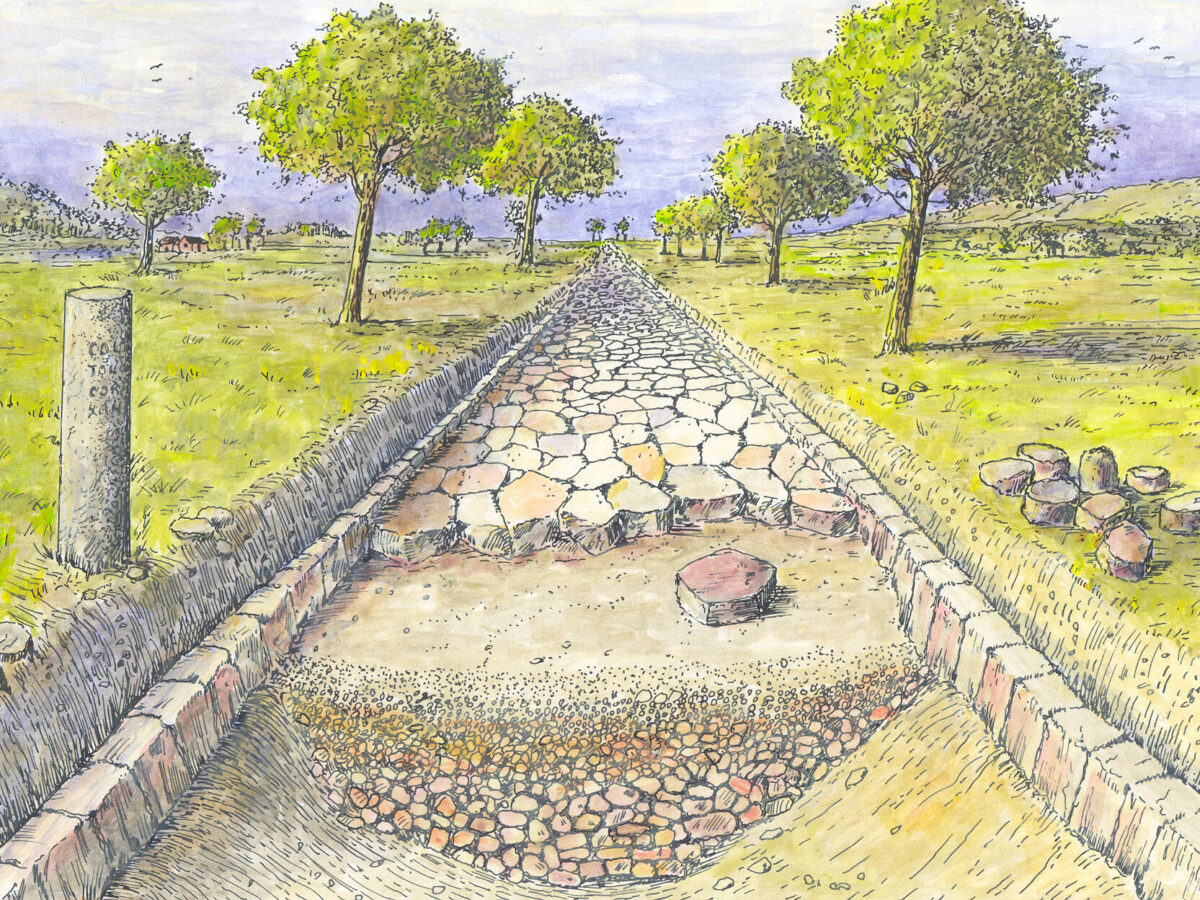Beneath the artificial turf lies a monumental Roman building
Author: Harry Lindelauf
Photography: Harry Lindelauf
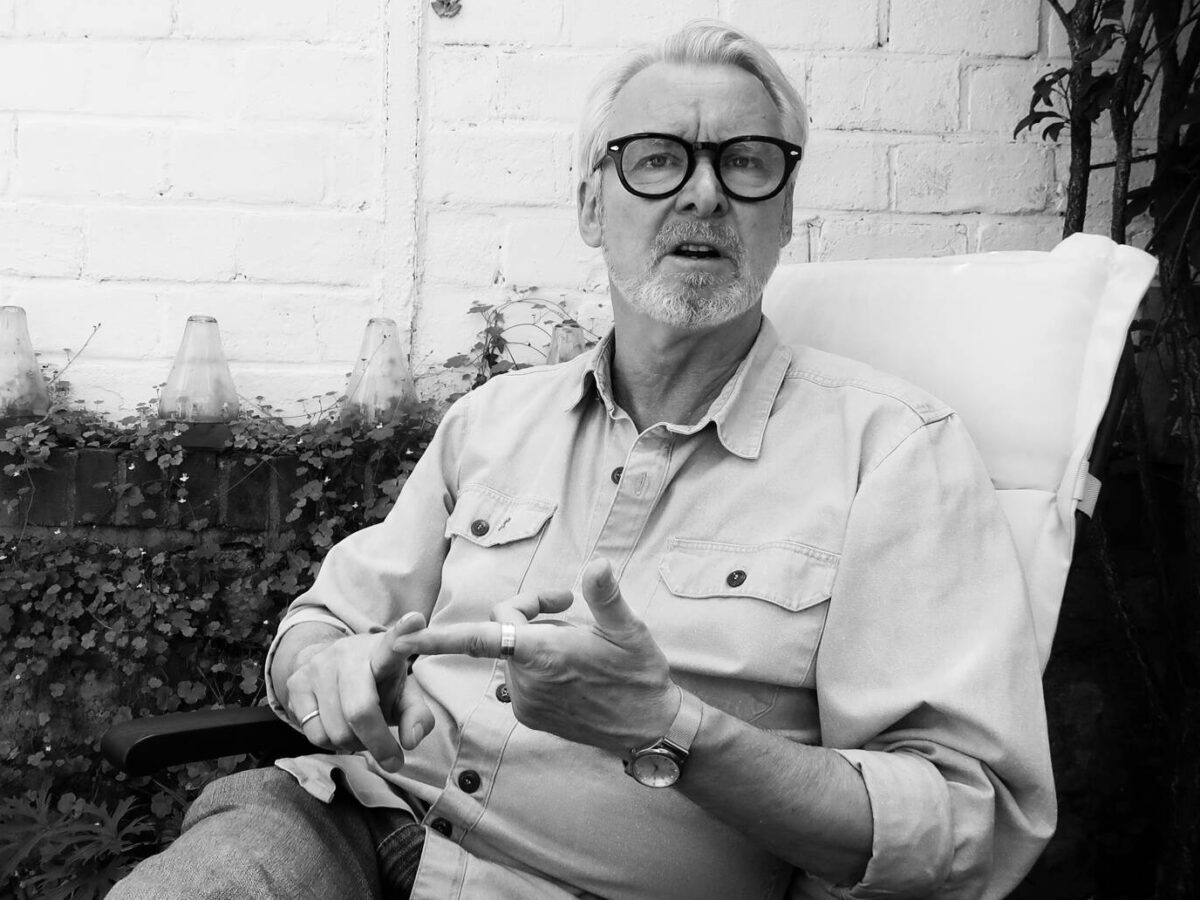
A year ago, Heel Heerlen Graaft! drew national attention. We paid a visit to participant Peter Soudant. In his patio garden on the Tempsplein, “excavation pit 22” lies hidden beneath artificial turf. Then, it was a figurative goldmine; now it is an open invitation for archaeologists to dig further. Because Peter can’t wait for them to return.
“I hate artificial grass, but the big advantage is that I can roll it up in a minute,” Peter Soudant explains with a laugh. He would gladly replace the green mat with a red carpet to welcome further research into the Roman history hidden beneath his house. “If Heel Heerlen Graaft! gets a sequel? By all means – dig in the patio or, for all I care, in the cellar. I’d say: be my guest.”
Photo: Peter Soudant — “I closed up the trench. Threw some soil in, added a few fake coins and some euro pieces. Just to tease the future archaeologists.”
Photo: Peter Soudant: ‘“I closed up the trench. Threw ome soil in, added a few fake coins and some euro pieces. Just to tease the future archaeologists.”
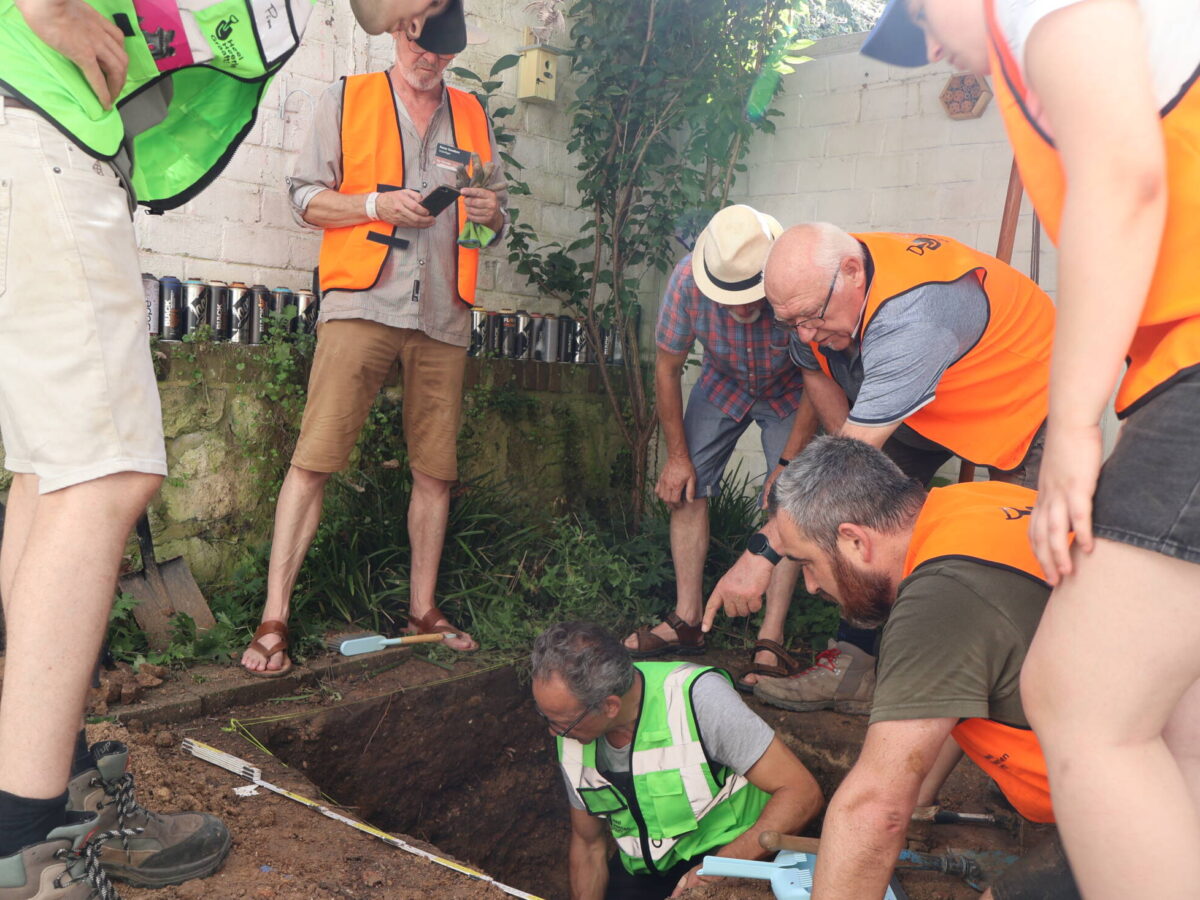
Hard work
In September 2023, both the expectations and the outside temperature are sky-high. It is 32 degrees, and grandfather Guus, father Gaston and daughter Emma Jamin from Maastricht have fought their way down to a depth of 80 centimetres as volunteer diggers. It is hard work, but excavation pit 22 has already yielded twenty buckets of soil filled with Roman fragments of roof tiles, floor tiles and pottery. In total, they collect 328 finds, including a large forged nail.
“Complete surprise”
That Sunday morning brings the “complete surprise” of Heel Heerlen Graaft!: beneath a 40-centimetre-thick layer of Roman rubble, a two to three centimetre layer of Roman lime mortar floor comes to light. The archaeologists, volunteer diggers, onlookers and patio owner Peter Soudant are beaming. What a discovery.
According to the archaeologists, the floor belongs to a “monumental” building. Its scale is revealed by the masonry foundations, which measure no less than 2.50 to 2.80 metres in width. Remains of those foundations were already uncovered in 1927, along with several building stones. Those blocks, made of natural stone, fit the profile of a monumental structure.
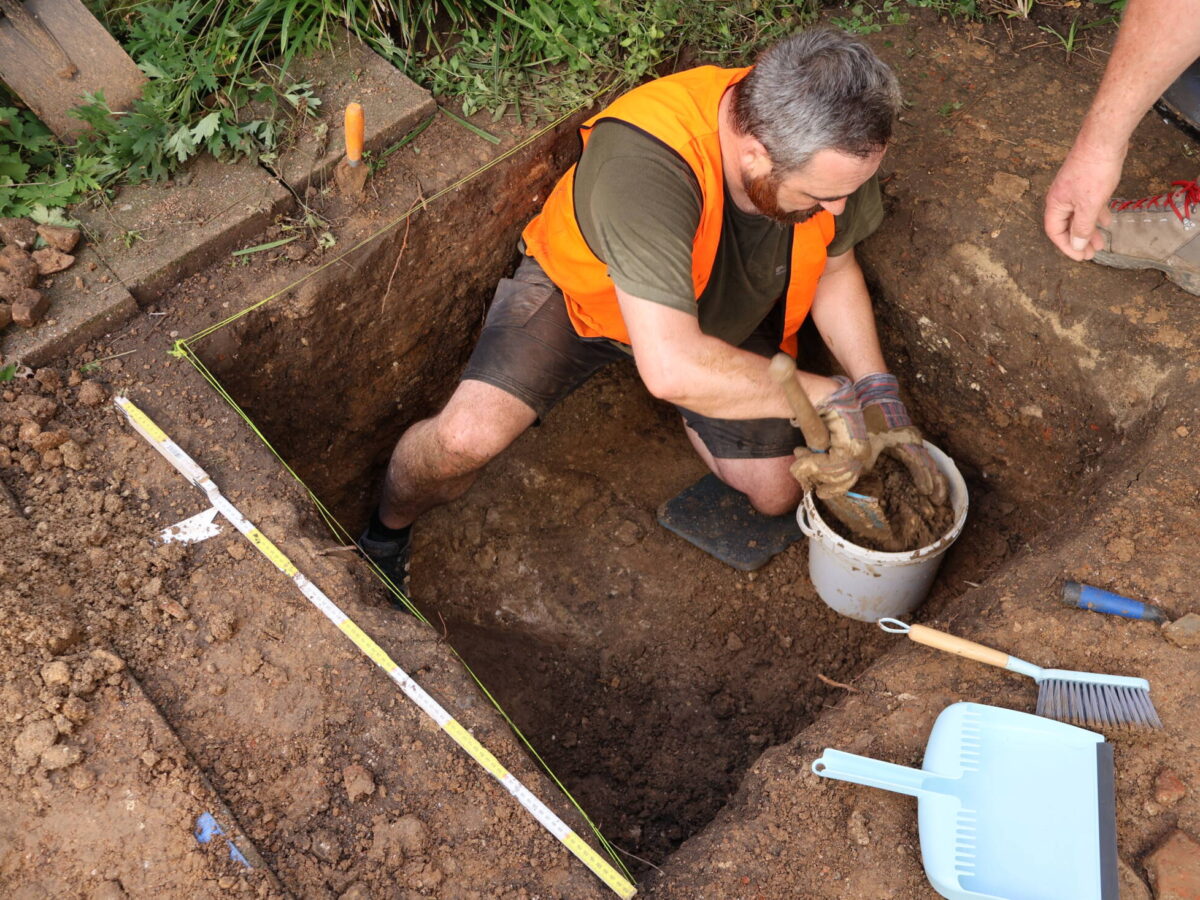
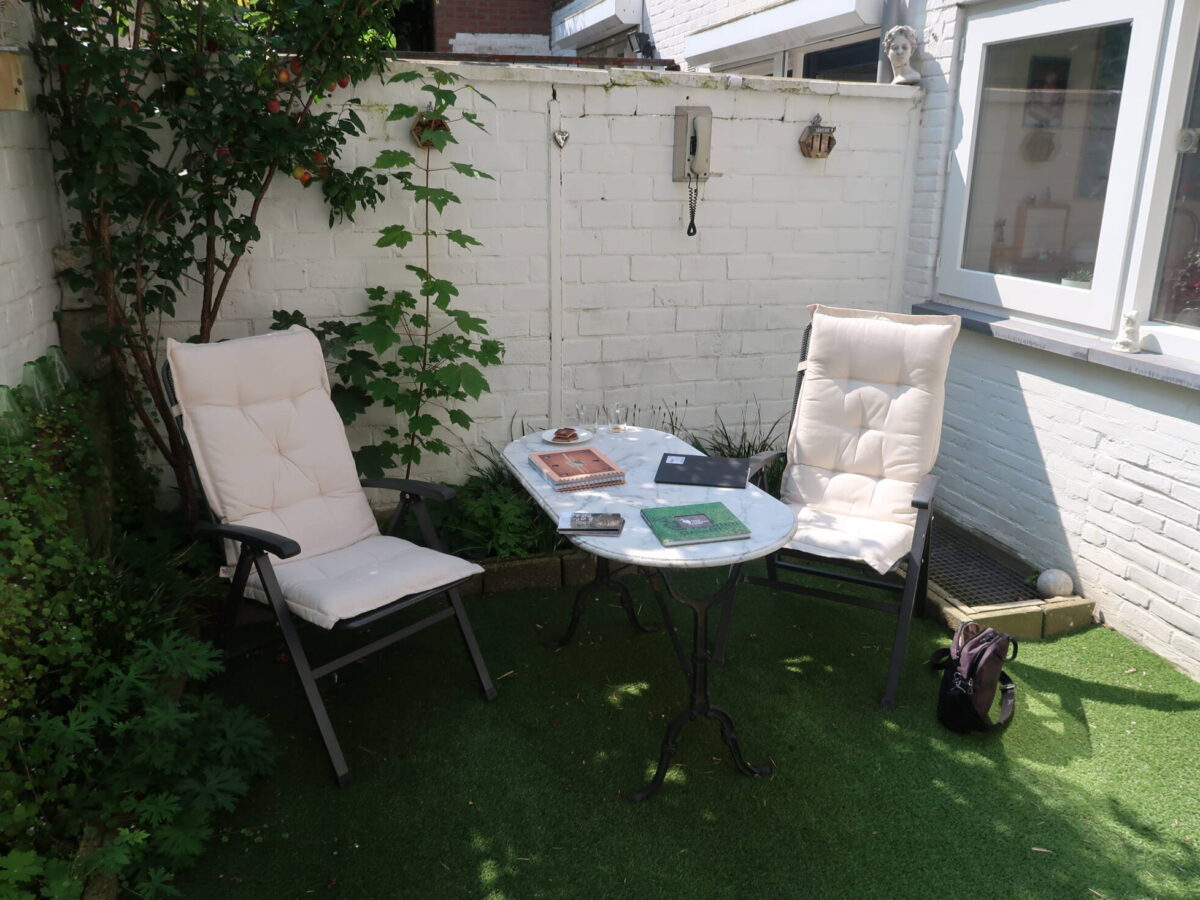
The feeling says: a temple
But the great mystery remains: what kind of building was it? What did the Romans use it for? Peter Soudant: “For me, there are three options: it was either a storage space, or some kind of smithy/arms factory – because metal slag has also been found here. Or it was a temple. I understand that Karen Jeneson and Gerard Tichelman are careful with their statements. As archaeologists, they look for evidence – that’s what makes them true scientists. I’m not a scientist, so I dare to say that my feeling points to a temple, to the sacred and the devout that once took place there.”
That feeling, for Peter Soudant, doesn’t come out of nowhere: “When I bought this house, I let my feeling guide me. When I first came to view it, the house was in poor condition. But even so, it felt right. I knew there was more to this place. What exactly, I didn’t know. And now it turns out my house on the Tempsplein stands on what, in Dutch terms, is a Roman goldmine.”
Photo: One year later – artificial turf and a seating area above excavation pit 22.
Photo: One year later – artificial turf and a seating area above excavation pit 22.
That mystery must be unravelled
fter that single square metre in September 2023, the archaeologists would love to continue digging in Peter Soudant’s patio garden – to follow the trail of the Roman mortar floor and perhaps uncover more remains of the monumental building. The excitement and suspense of that moment are still very much alive, now joined by a growing curiosity about the Roman legacy hidden beneath his home:
“I want to know if my feeling is right – was it really a temple, or just an ordinary workshop? That mystery must be unravelled. As far as I’m concerned, they’re more than welcome. I believe there is still a great deal hidden in the soil here.”
Photo: This fragment of a Roman roof tile was found just beneath the surface in Peter Soudant’s garden.
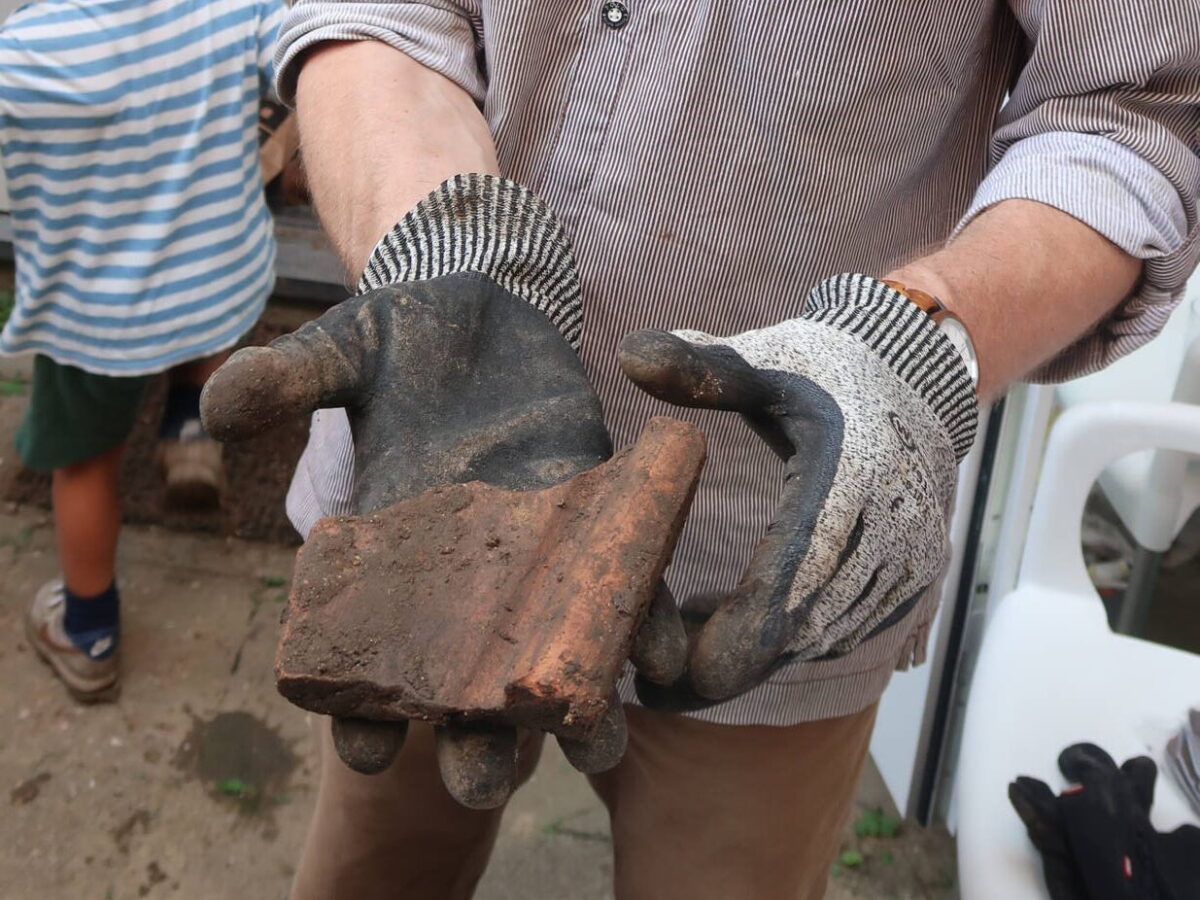
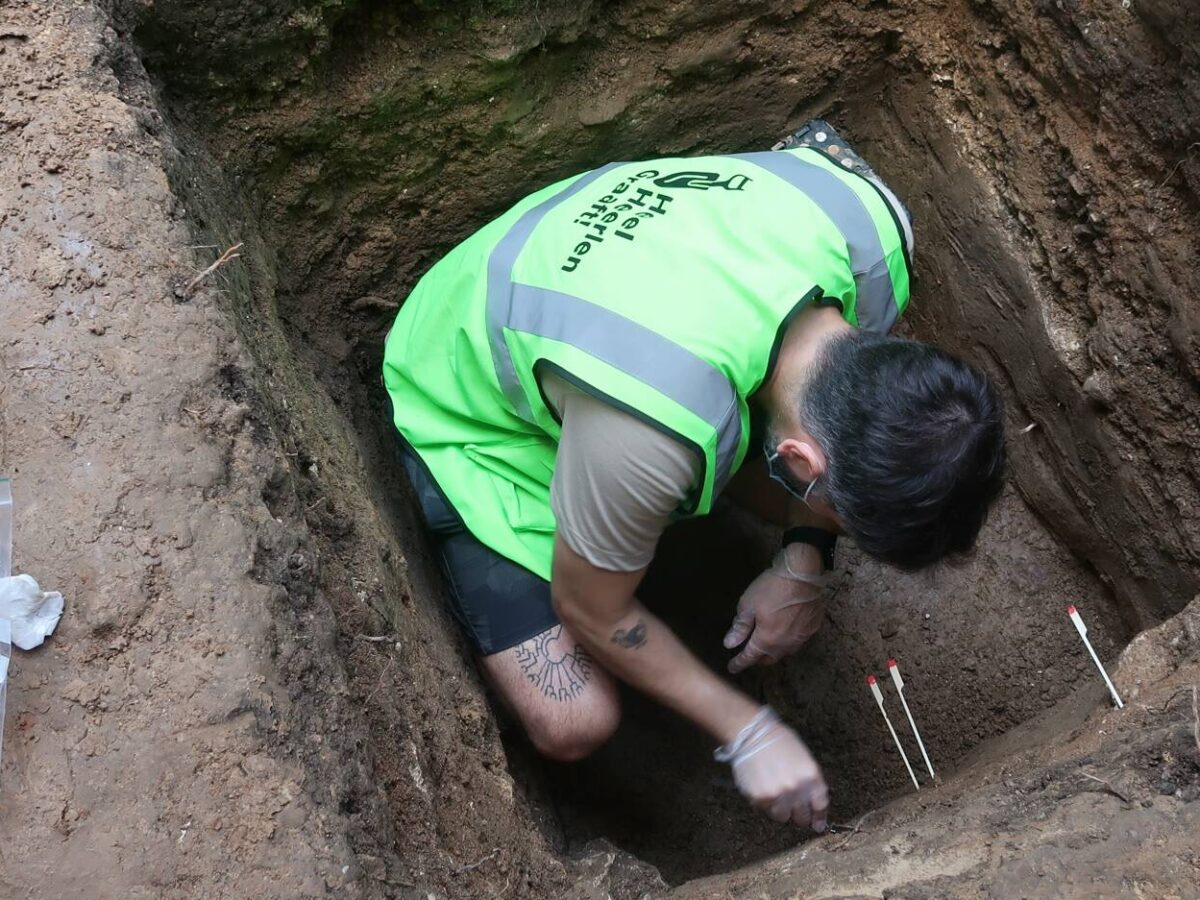
Archaeology on a Square Metre
t was archaeology on – quite literally – a single square metre. The event Heel Heerlen Graaft! on Saturday 9 and Sunday 10 September 2023 brought dozens of volunteers into action, who under the guidance of archaeologists excavated 22 trenches. The goal: to reach the original soil layer on which the Romans lived 2,000 years ago. Heel Heerlen Graaft! immediately set a record: it was the largest archaeological dig in the Netherlands carried out together with local residents.
The inventory of the “harvest” of Heel Heerlen Graaft! includes a Roman clothing pin (fibula), plenty of building material (roof tiles, mortar, floor tiles), and the lime mortar floor uncovered in the trench at Peter Soudant’s home. The results of the sedaDNA analysis of soil samples from the Roman layer have not yet been published. What has been published, however, is a book about the experiences of the participants in Heel Heerlen Graaft! A fun detail: Peter Soudant was responsible for the graphic design of the book.
foto: Soil samples for sedaDNA research were taken in the trench at Peter Soudant’s home.

